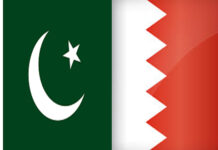ISLAMABAD: The World Bank in its latest report “2020 Global Economic Prospects” has slightly lowered country’s growth rate projections for the current fiscal year and next two years due to continuation of tight monetary policy and fiscal consolidation coupled with external factors.
The bank other day predicted Pakistan’s current year growth rate at 2.4 per cent — about 0.3 percent lower than its estimates of June 2019 — before touching three percent next fiscal year and 3.9 percent in FY2022.
“Pakistan’s growth is expected to rise to 3pc in the next fiscal year after bottoming out at 2.4 percent in FY2019-20, which ends on June 30”, said the World Bank, adding that macroeconomic adjustment in the country including a continuation of tight monetary policy and fiscal consolidation is expected to continue.
The lower growth rate forecast is generally in line with a similar (0.2 percent) decline in global growth rate during the current year and 1.5 percent decline in the South Asian region.
While growth in Bangladesh is projected to remain above seven percent through the forecast horizon, “growth in Pakistan is projected to languish at three percent or less through 2020 as macroeconomic stabilisation efforts weigh on activity.” Growth in India is projected to decelerate to 5 percent in FY2019/20 amid enduring financial sector issues.
Key risks to the regional outlook include a sharper-than-expected slowdown in major economies, a re-escalation of regional geopolitical tensions, and a setback in reforms to address impaired balance sheets in the financial and corporate sectors. South Asian growth is estimated to have decelerated to 4.9pc in 2019, substantially weaker than 7.1pc in the previous year.
The regional deceleration was pronounced in the two largest economies: India and Pakistan. Weak confidence, liquidity issues in the financial sector in India, and monetary tightening in Pakistan caused a sharp slowdown in fixed investment and a considerable softening in private consumption.
Export and import growth for the region as a whole moderated, in line with a continued slowdown in global trade and industrial activity. Business confidence was hampered by subdued consumer demand in India and security challenges in Sri Lanka. Demand faltered amid credit tightening, reflecting structurally high non-performing assets in Bangladesh, India, Pakistan and liquidity shortages in the non-bank financial sector in India, and tightening policies in Pakistan.
The world Bank said the growth had decelerated in the country to an estimated 3.3pc in FY2018-19, reflecting a broad-based weakening in domestic demand. “Significant depreciation of the Pakistani rupee (the nominal effective exchange rate depreciated about 20pc over the past year) resulted in inflationary pressures. Monetary policy tightening in response to elevated inflation restricted access to credit. The government retrenched, curtailing public investment, to deal with large twin deficits and low international reserves.”
Also progress in fiscal consolidation has broadly weakened. Pakistan’s budget deficit rose more sharply than expected. Contributing factors were a shortfall in revenue collection, combined with a sizable increase in interest payments.
The regional outlook for 2020 has deteriorated recently, and risks are tilted to the downside. Financial sector weakness will likely weigh on activity unless balance sheet vulnerabilities are addressed. Although recent tensions between India and Pakistan have abated, a reescalation would damage confidence and weigh on investment in the region.
For countries with elevated debt levels and large current account deficits like Pakistan and Sri Lanka, an unexpected tightening in global financing conditions could sharply raise borrowing costs and lead to stops in capital inflows.
























